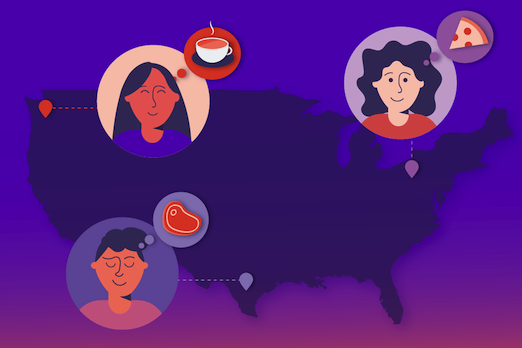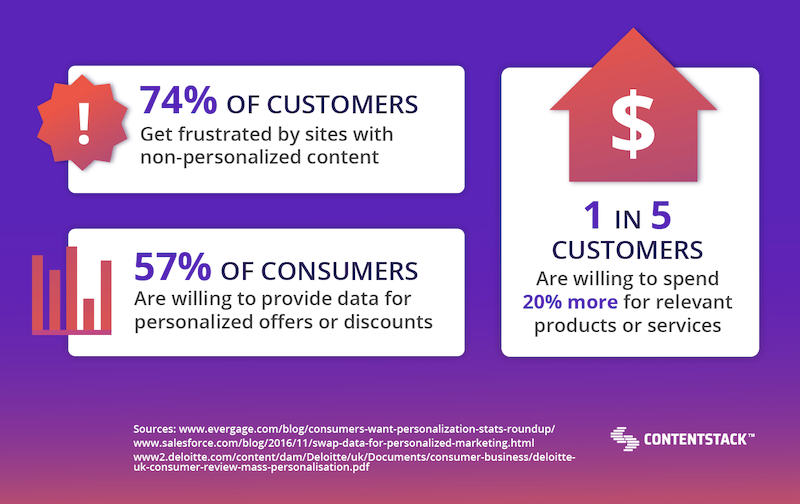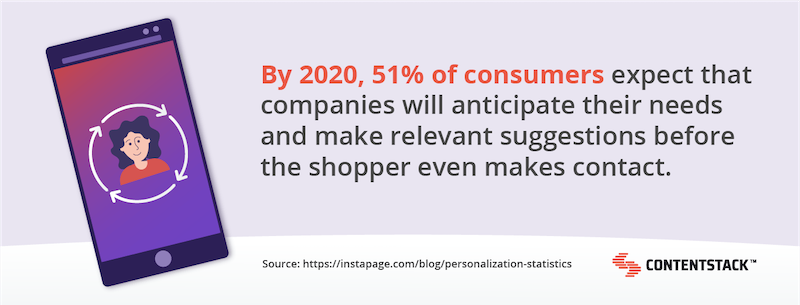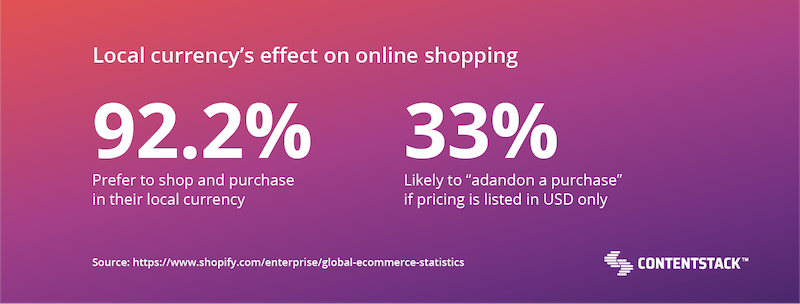Localization and Personalization at Scale

Marketing used to focus on the big picture—which single approach would appeal to the most significant number of customers or prospective customers? That’s because businesses had minimal data about their customers. At most, they might have had a bit of demographic information and a physical address.
Times have changed. Today, companies have access to an incredible amount of data from their customers, including their interests, their locations, what languages they speak, what types of products they have purchased in the past, and even what topics they have recently searched. Access to this data is making it easier than ever to create a personalized, localized online experience—which offers significant benefits for both users and brands.
What Are Personalization and Localization?
When it comes to marketing strategy, personalization and localization have become critical for brands looking to compete in an increasingly competitive global market. But, what do these terms mean and, more importantly, why do they matter for brands?
Personalization refers to using detailed data about a specific consumer to customize the messages you send them. This data may include their name, when they last visited your site, what items they added to their cart but didn’t purchase, or specific actions they’ve performed on your app—such as adding a coupon.
For example, a SaaS company might decide to send a consumer a coupon for an item they added to their cart but didn’t purchase. Not every customer would get this coupon, and each customer would get a coupon applicable to their specific purchase.
Localization is about sending the right message, to the right consumer, at the right time, and in the right place. Think of localization as utilizing real-time data about individual markets to create hyper-specific content or offers that feel unique.
For example, a fast-food company might email coupons to all its customers, but provide different offers based on location. They might send a coupon for ice cream to customers located in southern or western regions where temperatures are warmer, and a coupon for free soup to customers in regions where the weather is still cold.
So, how are personalization and localization different? Personalization looks more at specific users, while localization considers segmented customer markets as a whole. Personalization might use a person’s name, while localization would use their local language and images from their city.
Why Do Personalization and Localization Matter to Businesses?
While personalization and localization look slightly different when it comes to implementations, the benefits are very similar. Content and offers that are personalized and localized are more relevant, more useful, and, from the customer’s standpoint, more valuable.

At their core, personalization and localization matter because they create a more relevant customer experience. And that results in higher conversions.
Why Localization and Personalization Is the Future of Marketing
Marketing trends rise and fall with predictable regularity. Remember Facebook’s organic reach? Once upon a time posting from a business Facebook page was a pretty effective way to reach all your customers. Now, not so much.
However, localization and personalization of content are unlikely to be a passing trend. Several shifts in recent years indicate that these movements are not fleeting buzzwords, but powerful shifts in the way businesses need to market to consumers for years to come.
The Growth of Technology
In the past decade, technology has given us access to more information and data than ever before. Most of us now carry a computer that is millions of times more powerful than the computer used to get Niel Armstrong, Michael Collins, and Buzz Aldrin on the moon in 1969.
Technology has also given rise to the growth of automation and machine learning, which are taking over previously laborious manual tasks such as content translation, data collection, and even workflow approvals. As technological advances continue, it will become easier to provide personalized and localized content that customers crave.
Mobile’s Continued Rise
In the third quarter of 2019, mobile traffic accounted for more than half of all internet traffic for the first time. Google’s ‘mobile-first’ indexing is another indication of the growing power of mobile. In the coming years, mobile traffic and mobile-driven commerce are sure to continue to grow.
Successfully converting global customers on their devices requires delivering content that is both personalized and localized no matter where they’re shopping, when they’re shopping, or what devices they’re using to do their shopping.
The Omnichannel Surge
Before the internet, people accessed information in a handful of ways—mostly through newspapers and televisions. Today, the rise in second screens means customers are interacting with brands on their mobile devices while watching TV, shopping online, or interacting through social media, email, via websites, and mobile apps—and sometimes in more than one place at the same time.
Localizing and personalizing content for each channel, and each customer shows your audience you are paying attention, and you understand their wants and needs. This attention to detail builds trust with consumers.
The Power of Personal
In the coming years, personalized content will no longer be a nice-to-have; it will be a need-to-have. As major brands roll out more personalized content, customers are beginning to expect brands to create content that anticipates their needs and is relevant to their lives.

How To Achieve Hyper-Personalization with Localization
Personalization and localization will continue to drive growth and revenue for businesses in the coming years. And while many companies are looking at how to implement these strategies, there is often a disconnect between the two. The reality is, the two work best when applied hand-in-hand. The following explains how to combine personalization and localization and get the most out of both approaches.
Smart Content Translation
As ecommerce continues to attract global consumers, it is no longer enough for businesses to offer a single-language site. A survey of non-Anglophone consumers found that 60% of shoppers rarely or never make purchases from English-only sites. Content translation allows shoppers to build trust with brands that, quite literally, speak their language.
But don’t stop at translation. Make sure to update other language and location-based aspects of your site (that’s where localization comes in), such as listing prices in local currency. According to a study by Shopify, up to 33% of shoppers are likely to abandon a purchase when prices appear only in USD.

Multilingual Chatbots
Chatbots are useful for business. According to Chatbots Magazine, companies that implement chatbots on their websites can save up to 30% on customer service costs by providing customers with information and solving repetitive questions.
By making your chatbots multilingual, customers can access answers to their questions quickly and build trust. Most customers want to navigate the internet in their native tongue, and using chatbots to speak to them in their native language is a natural extension of this.
Predictive Analytics
As users interact with your app, site, chatbots, and other digital properties, they are giving you tons of information about who they are and their preferences.
For example, based on previous purchases, you can tell what types of products might interest a certain consumer—similar to Amazon’s recommendations. You may also be able to understand what their preferred customer support channels are or what times they are more likely to check their phones via app interactions.
This information, in concert with platforms like a CMS, CDP, and CRM, will allow you to, for example, call a prospect when they are most likely to be available or respond to a question through their preferred communication channel.
Artificial Intelligence
Many brands are already using artificial intelligence to work with content and automate tasks like content translation, ad targeting, and content optimization. Using data points gathered from customer behavior, AI can also help personalize and localize content by offering targeted content recommendations based on actions a user takes, the person’s location, and the language they speak.
The Future of Content and Marketing
Personalization and localization are the future of business content and marketing. Yet, only a small portion of brands are leveraging this strategy, which is a shame when so many customers indicate that it’s important to them—and they are even willing to spend more money on it.
Understanding how to implement both personalization and localization are critical to business success in the coming years. To learn from a brand that has mastered the art of delivering localized content at scale, join us for our upcoming fireside chat with Freeletics.
About Contentstack
The Contentstack team comprises highly skilled professionals specializing in product marketing, customer acquisition and retention, and digital marketing strategy. With extensive experience holding senior positions at renowned technology companies across Fortune 500, mid-size, and start-up sectors, our team offers impactful solutions based on diverse backgrounds and extensive industry knowledge.
Contentstack is on a mission to deliver the world’s best digital experiences through a fusion of cutting-edge content management, customer data, personalization, and AI technology. Iconic brands, such as AirFrance KLM, ASICS, Burberry, Mattel, Mitsubishi, and Walmart, depend on the platform to rise above the noise in today's crowded digital markets and gain their competitive edge.
In January 2025, Contentstack proudly secured its first-ever position as a Visionary in the 2025 Gartner® Magic Quadrant™ for Digital Experience Platforms (DXP). Further solidifying its prominent standing, Contentstack was recognized as a Leader in the Forrester Research, Inc. March 2025 report, “The Forrester Wave™: Content Management Systems (CMS), Q1 2025.” Contentstack was the only pure headless provider named as a Leader in the report, which evaluated 13 top CMS providers on 19 criteria for current offering and strategy.
Follow Contentstack on LinkedIn.







.svg?format=pjpg&auto=webp)
.svg?format=pjpg&auto=webp)
.png?format=pjpg&auto=webp)






.png?format=pjpg&auto=webp)



